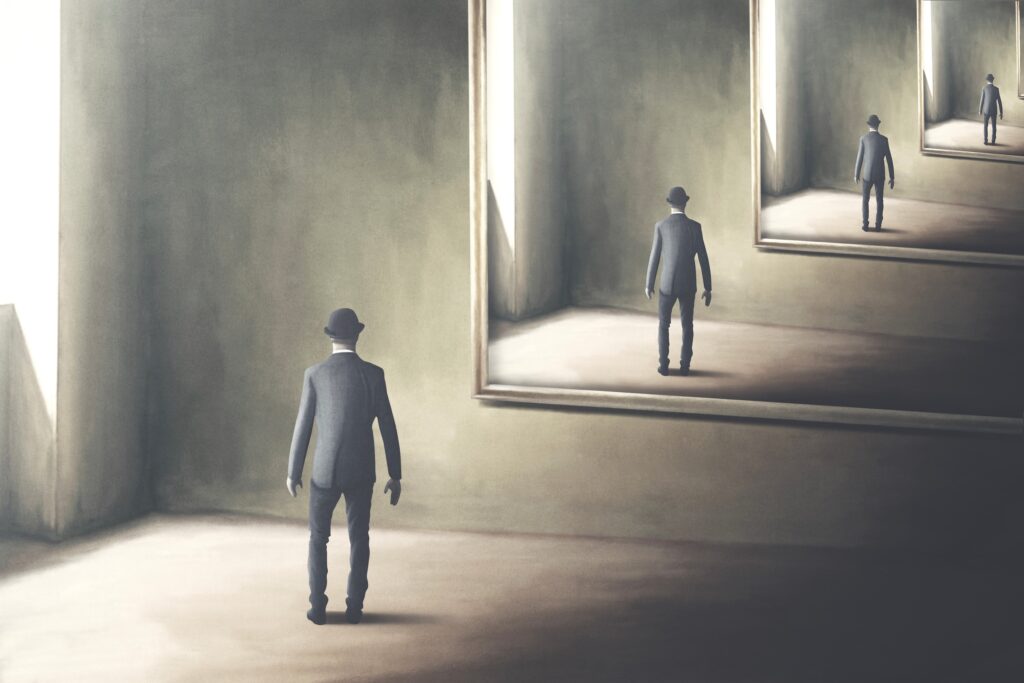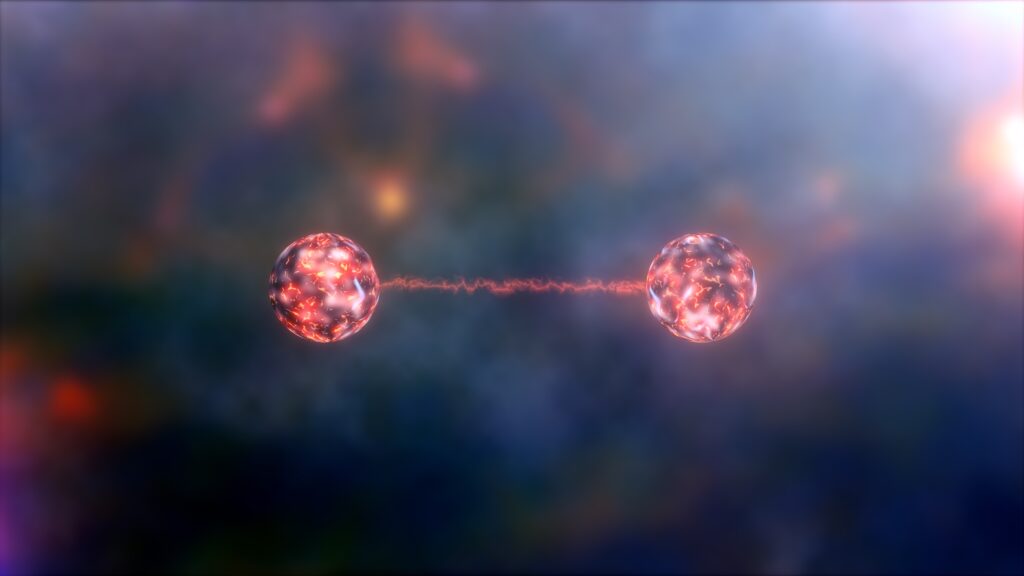Seeing things: The daimonic nature of reality
Reading | Mythology
![]() Patrick Harpur | 2021-01-08
Patrick Harpur | 2021-01-08

Are popular myths and tales merely an expression of naive superstition, or do they reflect—metaphorically or symbolically, as the case may be—something real about the underlying nature of reality? Author Patrick Harpur’s answer is as thoughtful as it is nuanced.
As we know from parables and fairy-tales, whatever is least regarded often turns out to be the most important thing. In the quest for reality, whether that of monotheistic religions or atheistic science, one of the main casualties has been those entities or principles which the Greeks called ‘daimons.’ This is the more surprising because there is no culture which does not, or has not at one time, recognized and revered daimons; and I would like to suggest that by ignoring, even reviling, them we violate reality and deprive ourselves of its fullness.
When Lady Augusta Gregory compiled a description from local informants of the daimons they called the Sidhe in Co. Galway, Ireland, she provided us with a list of characteristics pretty much common to all daimons. The Sidhe are shape-shifters. Their country is Tir-na-nOg, the Country of the Young. They will help a man with his work or even tell him where to find treasure; they will teach certain wise men and women where to find lost livestock, and how to cure the sick. The dead are often seen among them. The Sidhe have been, like the angels, from before the making of the world.
It is not to our credit, I think, that we now call Tir-na-nOg, the ‘unconscious,’ and the daimons, such things as ‘archetypes’ —although C.G. Jung recognized that archetypes ‘manifest themselves as daimones, as personal agencies, and are not “figments of the imagination” as rationalism would have us believe.’
I want to emphasize the chief attributes of daimons because these are also crucial attributes, often neglected, of the ground of reality itself. Firstly, they are ambiguous, even contradictory, both material and immaterial, for instance. Secondly, they are elusive, fast-moving, appearing and disappearing in the twinkling of an eye. Thirdly, they are shape-shifters, like Proteus nearly impossible to pin down. Whenever, therefore, we think we have a fix on reality, we will find when we look again that the image, concept or formulation we proudly hold up is an empty mask whose living daimon has already slipped away. The nature of daimons tells us besides that reality is better represented by concrete, personified images than abstract and impersonal concepts. If we want to catch them, we cannot use plodding logic or precise rationality; we have to use our own quickest, most colored, shape-shifting faculty: imagination. Fourthly, daimons are always marginal creatures who favor liminal zones or times for their appearances. They are always, too, marginalized by ‘official’ culture, whether of science or of the Churches. A fifth characteristic of daimons is emphasized by Plato in The Symposium, where Socrates tells us that we can have no contact with the gods or God except through the daimons who ‘interpret and convey the wishes of men to the gods and the will of gods to men.’ Only through the daimons, he says, ‘is there conversation between men and gods, whether in the waking state or during sleep.’ Here we understand the essentially intermediary nature of daimons, mediating between the material and the non-material, the personal and impersonal, between this world and the Otherworld.
Although the Otherworld in which the daimons are said to live is, of course, non-spatial (just as it is timeless), it always represents itself in spatial metaphors—it is beside this world, or beneath it, or above it, or concealed within it (and ‘not very far from any of us’). Multi-spatiality stands for non-spatiality. Yet the Otherworld takes precedence over, and is more real than, this world—as we suspect when we are seized by a dream or ravished by a vision, before ‘common sense’ re-asserts itself. The Otherworld is probably where we come from, if Plato is to be credited, and certainly where we go when we die.
One of the innovations of the modern Western world has been to turn the Otherworld into an abstraction. It has been formulated in three main ways: as the Greek psyche tou kosmou, or Soul of the World; as the imagination; and as the collective unconscious. The last two models of the Otherworld have the added eccentricity of being located within us. Historically, all three models have been outcast by Western orthodoxy—Christian theology no less than modern rationalism. But wherever they have as it were broken the surface and emerged from their ‘esoteric’, even ‘occult’ underworld, they have been accompanied by the most extraordinary efflorescence of creative life. In Renaissance Florence, and again, among the German and English Romantics three hundred years later, imagination was exalted not only as the most important human faculty, but as the very ground of reality. ‘The Primary Imagination I hold to be the living power and prime agent of all human perception,’ proclaimed Samuel Taylor Coleridge, ‘and is a repetition in the finite mind of the eternal act of creation in the infinite I AM….’
The only concern of the Primary Imagination, wrote another poet, W.H. Auden, is with sacred beings and events. They cannot be anticipated, he says—they must be encountered. Our response to them is a passion of awe. It may be terror or panic, wonder or joy, but it must be awe-ful. Auden’s sacred beings and events are our daimons, archetypal images which Imagination generates. They are chiefly personifications, but Imagination can, like the ‘glamour’ the fairies cast over objects, enchant any thing so that what we had formerly overlooked is suddenly seen as ensouled, a presence, as if it were a powerful living person.
Thus Romantic Imagination is pretty much the opposite of what it has come to mean—something unreal and invented, what Coleridge called ‘fancy.’ ‘The nature of Imagination is very little known,’ lamented the visionary artist and poet William Blake, ‘& the Eternal nature and permanence of its ever Existent Images is considered as less permanent than the things of Vegetative and Generative Nature.’ Indeed. Imagination is independent and autonomous; it precedes and underpins mere perception; and it spontaneously produces those images—gods, daimons and heroes—who interact in the mysterious unauthored narratives we call myths.
While the Otherworld is both within us and outside us—both microcosm and macrocosm—depending on our point of view, psychology has located it exclusively within. Once again, it was Jung who, through his own experience of a shamanic descent into the underworld of myth, pioneered the idea that ‘there may well be a psyche “outside-the-body”, a region so utterly different from my psychic sphere that one has to get out of oneself… to get there.’ He re-imagined the unconscious as an ‘alien country outside the ego’, an Otherworld of gods, ancestors and daimons just as traditional cultures describe. If it is within us, it is also as if, were we to travel deeply enough within, the unconscious turns inside out. ‘At bottom,’ said Jung, ‘psyche is simply “the world”.’
How did the unconscious come to be situated inside us? The short answer lies with the new kind of consciousness—our own modern Western consciousness, in fact—which emerged at the beginning of the 17th century. Its novelty lay in two extraordinary claims for which Descartes was the spokesman: firstly, it asserted that consciousness was entirely separate from the world, which henceforth was to be regarded as exclusively outside us—it was the subject in relation to which everything else was an object. Secondly, it claimed to be the whole of the psyche, effectively denying the existence of the unconscious.
The new consciousness was centered around a subject, an ego as we now call it, which was so bright, so focussed, so narrow, that it threw the rest of the psyche into deep shadow. All the twilight intercourse between consciousness and the unconscious ceased. From the ego’s point of view, the unconscious did not exist. From its own point of view, of course, the unconscious existed more profoundly, more darkly, sealed off as it was from direct expression through consciousness. Its stifled cries were not heard for three hundred years, when they came to light in the depth psychologists’ consulting-rooms. Indeed, psychology was founded specifically to disinter this buried part of the psyche; or we could say that the suppressed unconscious grew so importunate that we were compelled to invent psychology in order to contain it.
The very strength of the modern Western ego is also its greatest shortcoming, namely its literalism. You are led to believe a lie, Blake wrote in a poem, ‘when you see with not thro’ the eye.’ To see with the eye alone is to see the world as if in single vision, as two-dimensional only, as literal. To see the world through the eye is to cultivate what Blake called ‘double vision,’ which perceives in greater depth, beyond the literal to the metaphorical. He asked himself the question: ‘When the sun rises, do you not see a round disk of fire somewhat like a Guinea?’ ‘O no, no,’ he replies, ‘I see an innumerable company of the Heavenly host crying, “Holy, Holy, Holy is the Lord God Almighty”.’ Single vision sees the sun only as the ordinary Guinea-sun; double vision sees it also as a heavenly host. We need double vision to see the daimons—to see that they are real, but not literally so. Unfortunately we have become so literal-minded that the only reality we recognize is literal reality which, by definition, rules out daimons.
Reality is far from being intrinsically literal. It is literalized by the peculiar perspective of our modern consciousness. It is peculiar because it is the only perspective which insists that it is not a perspective at all but a true vision of the actual world. It has in fact lost perspective because ‘perspective’ means ‘seeing through’, and it fails to see through itself. So forceful is the literalism of our worldview that it is almost impossible for us to grasp that it is exactly that—a view—and not the world. The world we inhabit, then, is seen through a particular perspective, framed by imagination—in short, by a myth. There is always another world according to other perspectives, other myths. The collective unconscious, imagination and the Soul of the World are all models of this Otherworld, all analogous to each other, all metaphors for a daimonic reality—which is itself another metaphor. The ultimate reality to which these models refer is unknown. It is a mystery. The first task for us moderns is to learn to see through our literalism in order to restore Romantic double vision. For example, the daimons inhabit another, often subterranean, world which fleetingly interacts with ours. They are both material and immaterial, both there and not-there—often small, always elusive shape-shifters whose world is characterized by distortions of time and space and, above all, by an intrinsic uncertainty. The point is that the words ‘subatomic particles’ could be substituted for the word ‘daimons’ without any loss of accuracy. This is not a coincidence—the subatomic realm, like the unconscious, is where the daimons took refuge once they were banished from their natural habitats. We understand such particles as electrons literally—we even use them in our war against materialism. But electrons might be specifically designed to re-introduce us to the reality of daimons. They cannot, that is, be taken any more literally than the little people (or any less).
If the realm of subatomic particles is a literalized image of the immanent Otherworld, the transcendent Otherworld is literalized by our picture of the cosmos, whose fantastic denizens—Black Holes, Quasars, Dark Matter—resemble the ogres of fairy tales or else the elements of some ancient Gnostic myth. Within a black hole, for instance, there lurks a singularity about which nothing can be known because all the laws of physics break down at this point. Nor can it ever be observed directly because nothing can escape from it, not even light. Since time slows to nothing at the speed of light, anything crossing the ‘event horizon’ of a black hole will (from the viewpoint of an observer outside) take an infinite amount of time to reach the centre. And so on. It is easy to see that whatever else a black hole is, it is a knot of mythic resonances, an Otherworld where as usual everything is reversed and where time is distorted. Like an archetype or god, its influence is all the more powerful for being invisible and unknowable. As a daimon in a soulless universe, a black hole can only manifest itself as a devouring Charybdis that whirls everything in its vicinity into oblivion. It is incomparably smaller than a star, but its power is commensurately greater. It shape-shifts—black holes as tiny as atomic nuclei have been proposed. It is a materialistic image of the Unknown God who dwells in the unfathomable abyss and a negative image of the One beloved of the Neoplatonists.
The modern ego’s literalizing drive means that its scientific myths have to be acted out; the Otherworld has to be turned into this world. The supernatural and magical powers of the heroes and shamans who travel through the Otherworld are mechanically approximated by our technology. Guns and bullets supply the ability to do occult harm at a distance; telephony and radio supply the ability to communicate telepathically over long distances (the telescope is a kind of second sight, a way of seeing what is happening far away); X-rays and surgery literalize the shaman’s ability to ‘see inside’ his patients and to extract (by hand or by sucking!) the cause of the disease; aircraft and rockets literalize magical flight. The search for electricity was originally the quest for the ‘light of Nature’, a mystical counterpart to the ordinary light of fire or sun which could shine suddenly in the darkest night, surrounding every visit of a god or goddess, such as the Virgin Mary, or indeed every visitation from an angel or UFO. The closer science came to harnessing it, the more its elusive volatile nature, as the alchemists say, became fixed. Its mystical properties were distilled away, leaving only the dross of ordinary light. Illumination was literalized into mere light, whose profane brightness and glare were inimical to the dim sacred light in which true enlightenment occurs.
Television’s strange power to addict us stems from its literalization of Imagination itself: we gaze enchanted at the ‘little people’ in the artificial Otherworld on the screen. Because television feeds us images which are not, as Plato would say, representations of Eternal Forms (or, as we might say, Art), we remain—our souls remain—unnourished. We crave more images, and more, in the vain hope of that repletion which only relations with an authentic Otherworld can give. Indeed, whenever technology is divorced from true imagination it always proliferates manically, and we always want more—more machines, more images, and now more ‘information’, as if this quantitative ‘more’ could fill the void; as if ‘information’ were knowledge. Hence, however useful a tool a world-wide web of information is, it will never become the world-soul it is unconsciously imitating because it is a web spun out of our own entrails. Computer technology constantly drives towards the literalizing of daimonic reality. Its ‘chips’ are little souls to animate everything from ‘smart’ toasters to bombs; its cyberspace is a fantasy Otherworld; ‘virtual reality’ a counterfeit daimonic reality. We are fooled by the cleverness of computers into thinking that we can create an Otherworld and manipulate it. But the Otherworld is not our creation—if anything, it creates us. Nor can we manipulate it—we can only be transformed by it.
It might be advisable to seek out whatever contact with the Otherworld we may, and especially to pay attention to daimons in whatever guise they appear; for ‘whoever denies the daimons,’ wrote that great Neoplatonist, Plutarch, ‘breaks the chain that unites the world to God.’ We should try and restore the Soul of the World. This may not be impossible. Just as the individual soul was re-discovered through psychopathological symptoms, so might the ecological crisis be read as the collective soul crying out for attention. Everything in Nature that we could turn to if all else failed, has apparently turned against us: air, sunlight, rainfall—all are said to be polluted, carcinogenic, acid, harboring poison. Part of the pollution is the way that, even if literal pollution is not certain, we feel it to be so. Paranoia is a way of life as we sense attack from unseen agents all around us—barely detectable, shape-changing viruses, germs, invisible ‘rays’ (such as microwaves) in the air and even poisons in food full of putative pesticides and chemicals. And so on.
This paranoid sense of the world conspiring against us is also, of course, a symptom of the world reviving. We have declared it so much dead machinery for so long that when it comes back to life, ensouled—animated—as of old, it comes back seemingly as death itself. The outcast daimons return as the vengeful Furies of lethal pathological symptoms.
If we want to enthrone the Soul of the World in her original glory, we will have to do more than introduce environmental remedies which, however well meaning, tend to stand at an equal and opposite pole —that is, to be as literalistic as the damage we do. We have to cultivate a new perspective, or seeing through; and a sense of metaphor, a seeing double. It may even take a bit a madness, a smidgen of ecstasy, if we are to shift our obdurate literalism and impeach the imperious ego. We can always make a start by developing a better aesthetic sense, an appreciation of beauty, which is the first attribute of soul. For the way we see the world can restore its soul, and the way the world is ensouled can restore our vision.

Essentia Foundation communicates, in an accessible but rigorous manner, the latest results in science and philosophy that point to the mental nature of reality. We are committed to strict, academic-level curation of the material we publish.
Recently published
Reading
Essays
Seeing
Videos
Let us build the future of our culture together
Essentia Foundation is a registered non-profit committed to making its content as accessible as possible. Therefore, we depend on contributions from people like you to continue to do our work. There are many ways to contribute.















